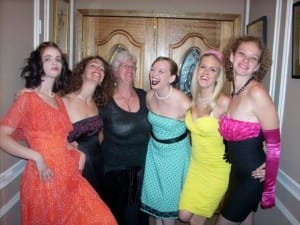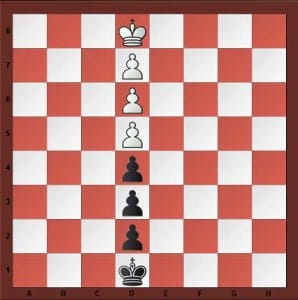Recently, I’ve been reading Grimm Fairy Tales to get to sleep. Here’s a new story for you in their style. Like all fairy tales, half is new and two-thirds is borrowed.
—
“Pasalo and Shala”
There was a handsome and hardworking farm boy. Because his hair was bright as gold, he was called Pasalo (“gold-headed boy”). Pasalo woke one morning to hear beautiful singing. As he went to the road, he saw a pretty girl singing while she carried pails of milk to town. Pasalo went to her. Her name was Shala (“nightingale”), and her pails were heavy, and she sang to lighten the load. Pasalo carried her pails for her. After walking a mile or two, they fell in love, and Pasalo promised to marry Shala.
Whereupon an enchantress swooped down upon them, bearing a gilded bird cage. She had heard Shala singing too. The enchantress raised her dark cloak and turned Shala into a nightingale; and the enchantress stole the nightingale into her cage. The enchantress cursed Pasalo, and he was frozen as stone, and could not move. The enchantress flew away, and Pasalo collapsed, free of the curse.
“I will bring my love back,” thought Pasalo. He got his pitchfork and went to the great dark castle on the hill where the enchantress lived. Through the top window he could hear the nightingale singing in the gilded cage. A great gargoyle perched on top of the castle. Pasalo attacked it with the pitchfork. The gargoyle laughed, snapped the pitchfork easily between his teeth, and pressed Pasalo to the ground with one claw. The gargoyle said, “You may not enter the castle unless you show me the most beautiful thing in the world.” He let Pasalo up. Sad and beaten, Pasalo walked down the hill.
As Pasalo returned to his farm, he spied a wise old fox, fainted from pain and hunger. “The enchantress has injured me,” said the fox. “Heal me, and I will help you.” Pasalo fed the fox chicken and let him heal in his bed. When the fox was well, the fox bowed and said, “How may your love be returned?”
Pasalo said, “The gargoyle said, I may not enter the castle unless I show it the most beautiful thing in the world.”
“Ah,” said the fox. “It has never been done before, but it may be done yet. You must first find the place where water turns to air. Then, you must pass the unpassable door. There, you will find the most beautiful thing in the world.” Pasalo asked the fox what he meant, but the fox sprang out the window and ran away.
For many years, Pasalo searched for a place where water turns to air. He searched many countries, many towns and many forests, but he could find no such place. He endured many misfortunes, and his hair turned from gold to silver and then to gold again with the effort. At last, when he could go no further, he collapsed by the top of a waterfall. “I shall never find the place where the water turns to air,” said Pasalo.
Pasalo looked over the cliff, and found that he had walked all the way to the edge of the earth. Pasalo watched as the river drifted off the earth, and the water cascaded into infinite sky, and the river came to reform as clouds above the earth. “Is this the place the fox spoke of?” said Pasalo.
Pasalo was dry, so he put his face in the river to drink. As he did so, underneath the surface of the water, he could see clearly. Upside down, he saw an underground cave. He climbed through the water’s surface, pulled himself onto a ledge, and stood. Pasalo saw an underground passageway. A river flowed at his feet, the sun shone brightly through the river, and the light danced on the cavern ceiling.
“I can breathe in here,” said Pasalo, “and thus have I seen water turn to air!” Pasalo followed the river of light until he came to a small shore of sand before a great hewn wall. There was a single door in the wall. On the door, in red, were the following letters:
THE UNPASSABLE DOOR.
“Not unpassable for me,” said Pasalo, but though he beat, shoved and pried at the door, it would not move a bit. Pasalo slumped on the sand, dejected. As he sat on the sand, he could see a faint light under the door. Pasalo said, “If I might not pass through it, I might pass under it,” and dug sand from under the door. At last he removed enough that he could slide himself underneath the door.
When Pasalo emerged, he saw a vast and rich treasure room with every imaginable kind of wealth: rubies, emeralds and diamonds as big as porcupines, beds and sheets and linens spun of pure gold, encrusted crowns and swords and staves, each one more exquisite than the last. “Everything here is a wonder, and there are so many wonders here,” said Pasalo. “How can I possibly choose the most beautiful thing?” As he said this he spied a single tulip growing in a patch in the corner. A single droplet of dew sparkled from the center of the tulip. As Pasalo took the flower, a spell lifted and all the jewels and fineries were revealed as rocks and wood.
“All my treasures are vanished,” said Pasalo, “but at least I have this.” Pasalo went back under the impassable door, through the river of light at the edge of the world, and over many many miles to the dark castle on the hill.
The gargoyle glowered at him. “You may not enter the castle unless you show me the most beautiful thing in the world.”
Pasalo showed the beautiful tulip with the droplet of dew. The gargoyle laughed and said, “I tell you to show me the most beautiful thing in the world, and you show me a simple common flower?”
Pasalo said, “No. I have travelled far and wide over many years, and I have seen the edge of the earth. I have traversed the place where water turns to air, and passed the impassable door. I have rejected every earthly treasure to find this tulip and bring it here, but not to you. Please give it to Shala the nightingale on my behalf, and tell her that I love her, and always will.” Whereupon the gargoyle bowed deeply and permitted Pasalo to enter.
Pasalo ran to the top window. He saw the dark enchantress dangle the gilded cage out of the window with one arm, with Shala the nightingale therein. “If you come at me, I’ll dash your nightingale to the rocks below,” said the enchantress, “and that will be the end of your true love.” Whereupon, from outside the window, the gargoyle seized the cage and the enchantress’s arm with it, and pulled them both outside the window. The enchantress swang from the teeth of the gargoyle. The gargoyle gave a small chomp, and the enchantress (less one arm) fell twenty stories to the sharp rocks below. As she died, the sun lifted, and roses climbed the walls of the castle.
Pasalo despaired of Shala the nightingale in the jaws of the gargoyle, when the gargoyle placed his great head in the window and smiled. Through his teeth stepped Shala. The curse was lifted, and she was as beautiful as the day when Pasalo first saw her. They were married and lived happily in the castle with the great gargoyle guarding them; the last I heard, the three live there still.

